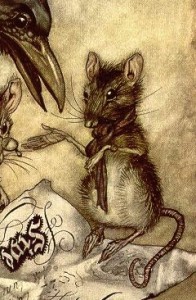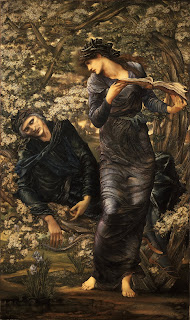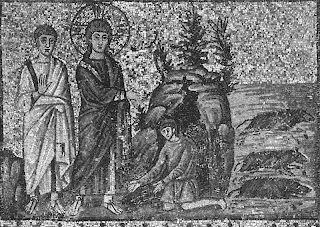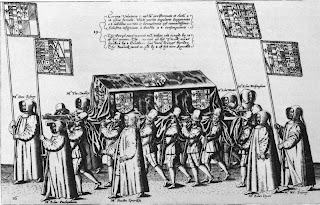
Rackham (source)
Or, how I discoverned what halflings were like in my setting.
The sequence of events was as follows.
- Gustie’s first PC, a fighter named Lune, was incinerated by a fire-breathing statue trap.
- For his next character, he decided to create a thief, Beni Profane, a rat-catcher.
- After an adventure, Beni went carousing and failed his saving throw. He rolled a 19, which is: When in a drunken stupor you asked your god(s) to get you out of some stupid mess. Turns out they heard you! Now as repayment for saving your sorry ass, you’re under the effects of a quest spell.
- I asked Gustie what god or spirit Beni worshipped, to which he responded none. So I asked him what god he feared, and he came back with The Mother of Thousands, a six-armed rat spirit.
- And so was Beni was given a quest in his dreams by The Mother of Thousands.
- The problem, as it turned out, was that a group of ratlings was being persecuted by the Priest-King Agamos, lord of the stronghold of Ilum Zugot to the northwest (map).
- The ratlings had recently taken over some abandoned grave barrows as shelter, and were stealing grain from the Priest-King’s farmers and grain stores.
- The PCs successfully negotiated a deal between the rat-folk and the Priest-King where Agamos would give them grain in exchange for direction to more sealed barrows and spying on those around the Priest-King’s domain (especially Efulziton the Unseen, a necromancer to the south).
Ratling Class
- 2d6 for strength and constitution
- Level progression as thief
- Hit dice as magic-user
- Attack progression as cleric
- No skill with armor, but see below
- Only small weapons may be used without penalty
- Weapon damage is “two dice, take least” or one die if wielded with two paws
- May use their bite to attack (1-3 damage) or chew through things like ropes
- Climb Walls, Hear Noise, Hide in Shadows, Move Silently, Pickpocket
- Smell-based search rolls (including detecting poison) as Hear Noise
- Natural AC as light armor (leather)
- Round to round, attack ranks may be used to improve AC
- +4 save versus wands, dragon breath, and disease
- May speak to rats and related rodents (only general concepts)
- Can squeeze through extremely small openings
- For starting retainer roll d6: 1-3 giant rat, 4-6 young ratling
Ratlings detest most domesticated animals, but sometimes have giant rats (HD 1-1, AC 7, damage 1-3) as companions. Humans also will generally not follow them as retainers. Thus rather than a standard retainer, ratlings may begin with a giant rat or ratling youth. It is common for young ratlings to be taken on short tours of the world at large, to teach them how to hide from civilized folk and familiarize them with all the dangers that threaten rat-folk. Most return to their burrows terrified of everything, but a few rare ratlings acquire a taste for adventuring.
Ratling youth
HD 1-1, AC 7, bite, smell, and climb walls as above; convert to full ratling at 100 XP.











